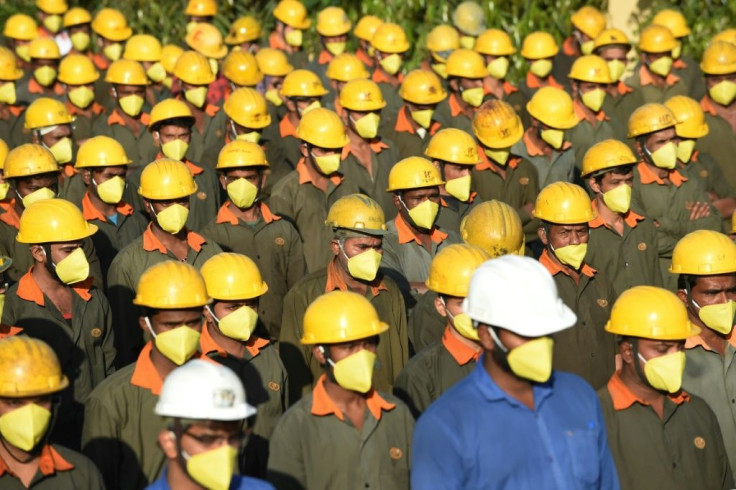Economic News: Manufacturing Index Falls Precipitously, Unemployment Claims Rising

KEY POINTS
- The Philadelphia Fed said factory conditions in its region deteriorated markedly in March to a negative 12.7
- Earlier in the week, the New York Fed said its business index fell to a negative 21.5
- Initial unemployment claims rose 70,000 last week, but that could get much worse in coming weeks
Economic reports Thursday indicated the economy is contracting rapidly as a result of the coronavirus pandemic with factory conditions deteriorating and unemployment rising as U.S. life grinds to a virtual halt.
The Federal Reserve Bank of Philadelphia reported factory conditions in the region plunged a record 49 points in March and initial unemployment claims nationwide rose 70,000 for the week ended March 14, ahead of recommendations that people stop gathering in large groups and stay home as much as possible. The number of initial unemployment claims was expected to soar next week as more businesses shut down.
The reports came as President Trump signed legislation providing $104 billion in paid sick leave, expanded unemployment benefits, food aid and free testing for COVID-19, and the Senate worked on a more than $1 trillion package that includes funds for direct payments to taxpayers and bailouts for industries hammered by the pandemic.
The Philadelphia Fed said the general activity index fell to a negative 12.7 from a positive 36.7 in February, indicating a contraction is underway.
“The survey’s current indicators for general activity, new orders, and shipments fell precipitously this month, coinciding with developments related to the coronavirus,” the Philadelphia Fed said.
The Federal Reserve Bank of New York reported earlier this week its business conditions index fell more than 34 points to a negative 21.5, the lowest level since 2009.
Economist Paul Krugman tweeted manufacturing indexes are “falling off a cliff.”
And another manufacturing index shows us falling off a cliff 4/ https://t.co/jw4kjqtwVG
— Paul Krugman (@paulkrugman) March 19, 2020
Diane Swonk, chief economist at Grant Thornton, compared this week’s initial unemployment claims to what happens after a natural disaster like a hurricane or earthquake. She said, however, Americans can expect multiples of that in coming weeks, doubling the unemployment by late spring and sending it even higher by midsummer.
Also, per @marthagimbel, the percent increase in one week highest on record. Well in excess of the losses endured during Great Recession. This will mark the week the recession began in the US.
— Diane Swonk (@DianeSwonk) March 19, 2020
My estimates hace the unemployment rate more than doubling by late Spring, higher by mid summer.
— Diane Swonk (@DianeSwonk) March 19, 2020
We could also see a much larger rebound in jobs as the economy ramps up if Congress can act quickly to provide life boats needs to traverse COVID tainted waters.
The unemployment rate for February stood at 3.6%. Treasury Secretary Steven Mnuchin warned Senate Republicans this week it could go as high as 20% if the government doesn’t take action to mitigate the virus’ impact. Trump later said that’s a worst case scenario.
© Copyright IBTimes 2024. All rights reserved.






















